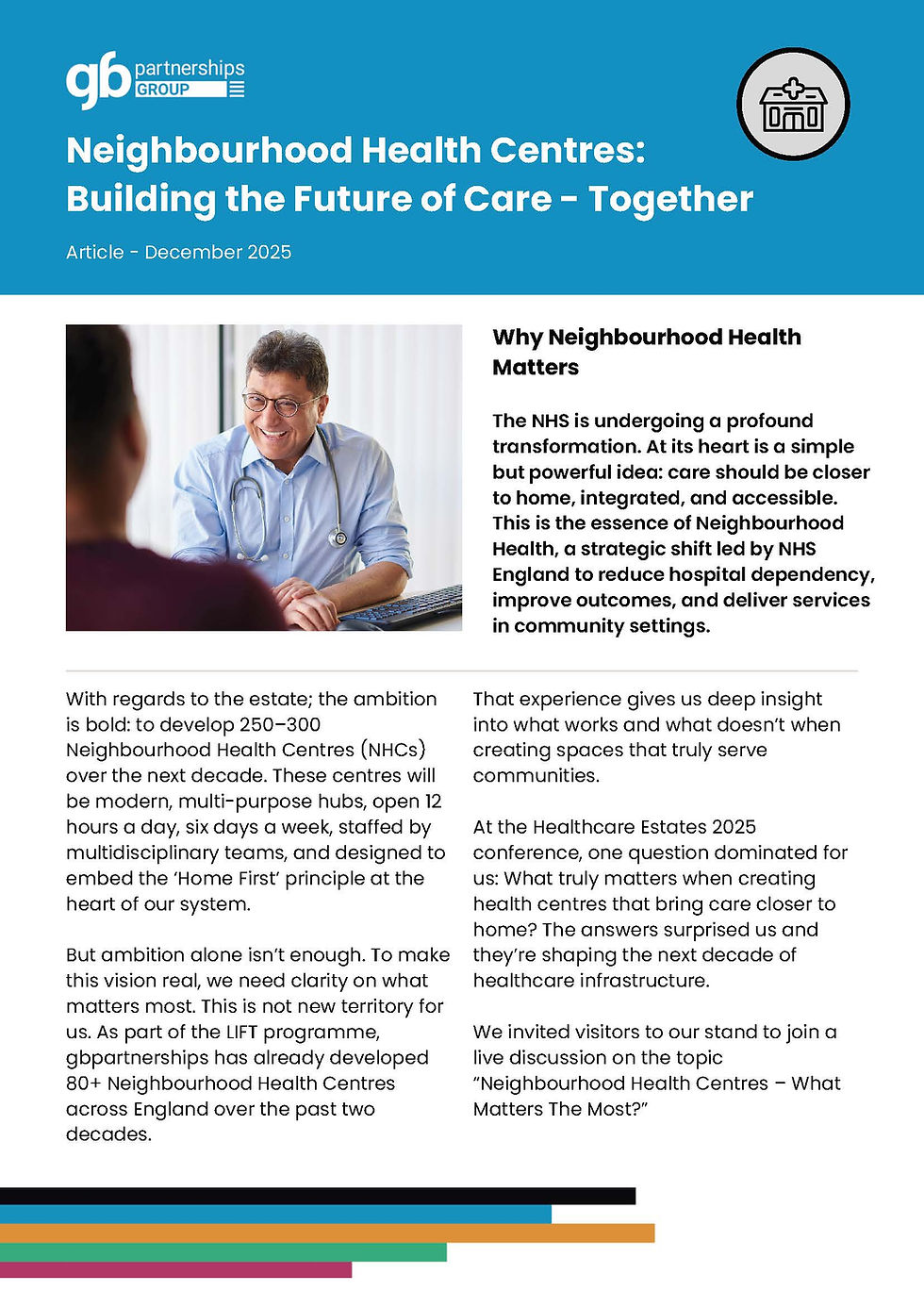Maximising the use of NHS community buildings
- gbp group

- Nov 16, 2021
- 3 min read
Space Utilisation: Why is it so hard to maximise the use of NHS community buildings and how can you overcome the barriers?
With practical insights from over 50 projects, the gbpartnerships consult team has a wealth of experience working with NHS organisations. We support the delivery of buildings that are well-used and fit for purpose for commissioned NHS services. On this background, and using a stakeholder survey conducted in October 2021, we presented our findings to the NHS Property 2021 conference on the 9th November in London.
Here we share the survey findings and put forward some of the lessons that the team has learnt along the way. The survey responses were from experts in their field and chimed with our experiences.
Primary and community care buildings across the UK are operating at around 40-50% capacity in terms of the utilisation of available clinical and non-clinical space. There is a considerable opportunity to make available the underused and unused space across the estate to support the delivery of the NHS Long Term Plan, which aims to shift of services from the acute sector into primary care and the community.
Improving utilisation would not only save money that can be redirected back to staff, but it would also open up opportunities for greater collaboration and service integration. The knock-on wins are better experience for patients and reduced demand for costly new builds.
But why is so hard to maximise the utilisation of these buildings, and how can we work together to overcome some of the barriers?
Barriers
We asked survey respondents to rank a list of barriers to maximising the utilisation of space in order of importance (from high to low importance). You can see from the chart below which barriers were ranked highest (blue highlight):

Solutions
Respondents were then asked to rank a range of potential solutions to low utilisation in order of importance (from high to low importance). You can see from the chart below those that were considered the most important solutions (blue highlight):

Key Take Out
The survey responses to both of these questions show that the key to delivering complex optimisation projects is system collaboration, relationships, strong leadership, and determination to deliver. Without strategic buy in, it it is very difficult to resolve multi-faceted issues.
“Clinical and service delivery strategies and informed and embedded stakeholder involvement must drive asset optimisation with decisions based on fact and data across a wide healthcare and social care environment and the power and authority to act on complex asset optimisation issues decisions that result in transparent value and impact.”
“Whilst flexible leasing arrangements are an important part to better utilisation without system buy-in, better building use and improved utilisation may be compromised and not deliver long term.”
Our Key Learning
Drawing on our experiences and from those shared with us in the survey, our key learning is that you need the following in place to unlock space and drive change:

In Summary
As highlighted by Sir Robert Naylor in his 2018 report, the estate should be the enabler that accelerates, rather than holds back, the redesign of primary and community care.
We look forward to working with our NHS partners to ensure that the images of modern consulting rooms lying unused in Hospital are not repeated elsewhere. Sometimes this will require difficult questions and honest truths, but we must collaboratively grasp this nettle for the benefit of patients.





Comments